SB 1383 Edible Food Recovery Requirements
California Senate Bill 1383 is a first-of-its-kind climate action law. It requires a 75% reduction of the landfilling of organic waste by 2025 and mandates how large food-generating businesses and organizations must handle and help recover their surplus edible food. Landfilling food and other organic waste creates a potent greenhouse gas called methane that intensifies climate change. Properly managing our surplus food and organic waste today is a vital step to address the climate emergency.
This website will help large food-generator businesses and organizations understand the new SB 1383 edible food recovery mandates, determine if these mandates apply to their operations, and identify the steps they need to take in order to comply with the new law. Read through the following sections to learn more.
Questions about SB 1383’s edible food recovery requirements and the steps for compliance outlined below can be sent to the Sustainability Department at ediblefoodrecovery@smcgov.org.
There are two categories of food-generating businesses and organizations that have new food recovery mandates: Tier 1 generators and Tier 2 generators. If your business or operation falls into either of these categories read Step 2-9 closely.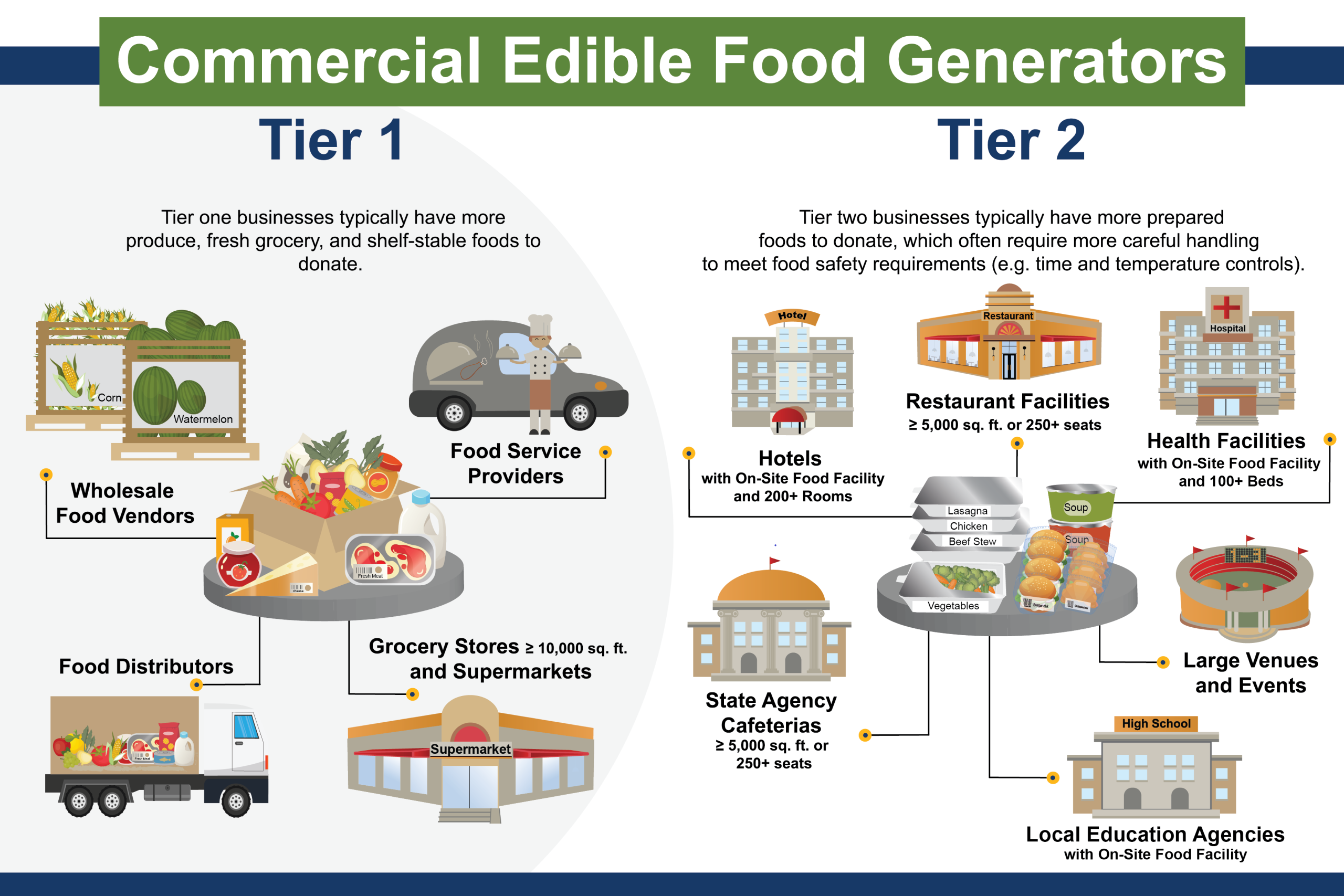
Tier 1 generators include:
| Generator Type | Generator Definitions—as defined in CA SB 1383 regulations adopted October 2020 |
|---|---|
| Supermarket | A full-line, self-service retail store with gross annual sales of two million dollars ($2,000,000), or more, and which sells a line of dry grocery, canned goods, or nonfood items and some perishable items. |
| Grocery Stores 10,000+ sq ft total facility size | A store primarily engaged in the retail sale of canned food; dry goods; fresh fruits and vegetables; fresh meats, fish, and poultry; and any area that is not separately owned within the store where the food is prepared and served, including a bakery, deli, and meat and seafood departments |
| Food Service Providers | An entity primarily engaged in providing food services to institutional, governmental, commercial, or industrial locations of others based on contractual arrangements with these types of organizations. This does not include catering companies that only provide food services on an order-by-order basis to clients without holding any long-term contracts. |
| Food distributors | A company that distributes food to entities including, but not limited to, supermarkets and grocery stores |
| Wholesale food vendors | A business or establishment engaged in the merchant wholesale distribution of food, where food (including fruits and vegetables) is received, shipped, stored, prepared for distribution to a retailer, warehouse, distributor, or other destination |
Tier 2 generators include:
| Generator Type | Generator Definitions—as defined in CA SB 1383 regulations adopted October 2020 |
|---|---|
| Large Restaurants | An establishment primarily engaged in the retail sale of food and drinks for on-premises or immediate consumption with 250 or more seats, or a total facility size equal to or greater than 5,000 square feet. |
| Large Hotels | any hotel, motel, bed and breakfast inn, or other similar transient lodging establishment with 200 or more rooms and an on-site food facility |
| Large Health Facilities | a facility, place, or building that is organized, maintained, and operated for the diagnosis, care, prevention, and treatment of human illness, physical or mental, including convalescence and rehabilitation with 100 or more rooms and an on-site food facility |
| Local Education Agencies | a school district, charter school, or county office of education with an on-site food facility |
| Large Venues | a permanent venue facility that annually seats or serves an average of more than 2,000 individuals within the grounds of the facility per day of operation of the venue facility. |
| Large Events | an event that charges an admission price, or is operated by a local agency, and serves an average of more than 2,000 individuals per day of operation of the event |
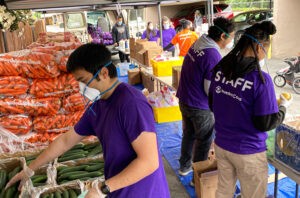
Edible food recovery is the act of diverting surplus edible food from businesses, organizations, or events that otherwise would have been disposed of in a landfill or sent to compost. Recovered food is then distributed to neighbors in need. This recovery service is carried out by food recovery organizations, such as food banks and other community-based organizations with a deep understanding of food insecurity in our communities and programs to distribute food throughout our communities.
Edible Food Recovery helps eradicate food insecurity and, by keeping food out of the landfill, lessens the effects of climate change by reducing methane gas emissions. Building a robust food recovery program for your operation is an immediate action you can take to support your community and the environment!
Edible Food Recovery directs surplus food to people. Sending surplus edible food to an animal feed operation or to compost are both preferable to landfilling, but neither are considered edible food recovery.
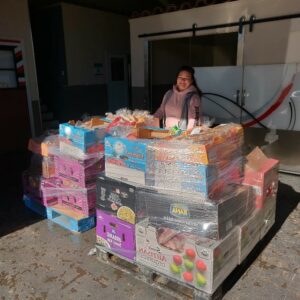
Regulated businesses and organizations must do the following to comply with their SB 1383 edible food recovery requirements. Tier 1 generators must meet these requirements starting January 1, 2022. Tier 2 generators must meet these requirements starting January 1, 2024.
Recover edible food: Save the maximum amount of your surplus edible food that would otherwise be disposed (e.g. in landfill or compost), so it can be used to feed people in need. Intentionally spoiling surplus food so that it cannot be recovered is prohibited.
Contract: Establish a contract or written agreement with a food recovery organization(s) that picks up or receives edible food for distribution to neighbors in need.
Track: Maintain records of type, frequency, and pounds of food recovered each month by each of your food recovery organization partners.
Coordinate with the County: Provide the County of San Mateo Sustainability Department information about your edible food recovery efforts upon their request and coordinate with County staff as they conduct in-person inspections of your edible food recovery operations.
Failure to meet these requirements will result in fines.
Your business or organization is required to recover the maximum amount of your surplus edible food. Conduct an internal assessment to determine where, when, and how much surplus is generated in your operations. Taking this step will allow you to assure you’re recovering the maximum amount of your surplus and will help you find the right food recovery organization partner.
Preventing surplus from being generated in the first place is the most effective way to reduce food waste. Learn more about how your business or organization can prevent food waste and save money with our Prevention Tips and Resources.
A map of food recovery organizations operating in San Mateo County can be found down below and here. Click the arrow in the right-hand corner of the map to filter which food recovery organizations are displayed.
Be sure to read through the descriptions of each org before contacting them to determine if they accept the type and quantity of food you have to recover.
All regulated businesses and organizations are required to hold a contract or written agreement with a food recovery organization that sets the terms of their food recovery partnership. Even if you only require food recovery services occasionally or unexpectedly, you must still hold a contract. Taking this important step will put your food recovery plan in place if and when you find yourself with surplus food that is legally required to be recovered.
Many food recovery organizations will offer their own contracts for use. A sample contract available for your use and customization can also be found here.
If your business or organization truly has no surplus edible food, and no possibility of generating surplus edible food, a contract with a food recovery organization may not be needed. Achieving zero surplus is rare for most operations, but possible through robust food waste prevention efforts. Learn more about how your business or organization can prevent food waste and save money with our Prevention Tips and Resources.
If your business or organization does not generate surplus food and does not hold a contract, you must still have a plan in place to have surplus food recovered if a circumstance arises that leaves you business with surplus (incorrect shipment of product, product mislabeling, refrigeration failure, power outage, etc.). Please review our list of Food Recovery Organizations and Services to find an organization you may partner with if surplus ever does become available.
No regulated business or organization is exempt from food recovery inspections. If your business has no surplus and chooses not to hold a food recovery contract, you must be able to demonstrate no surplus is generated and your food recovery plan if this were to change.
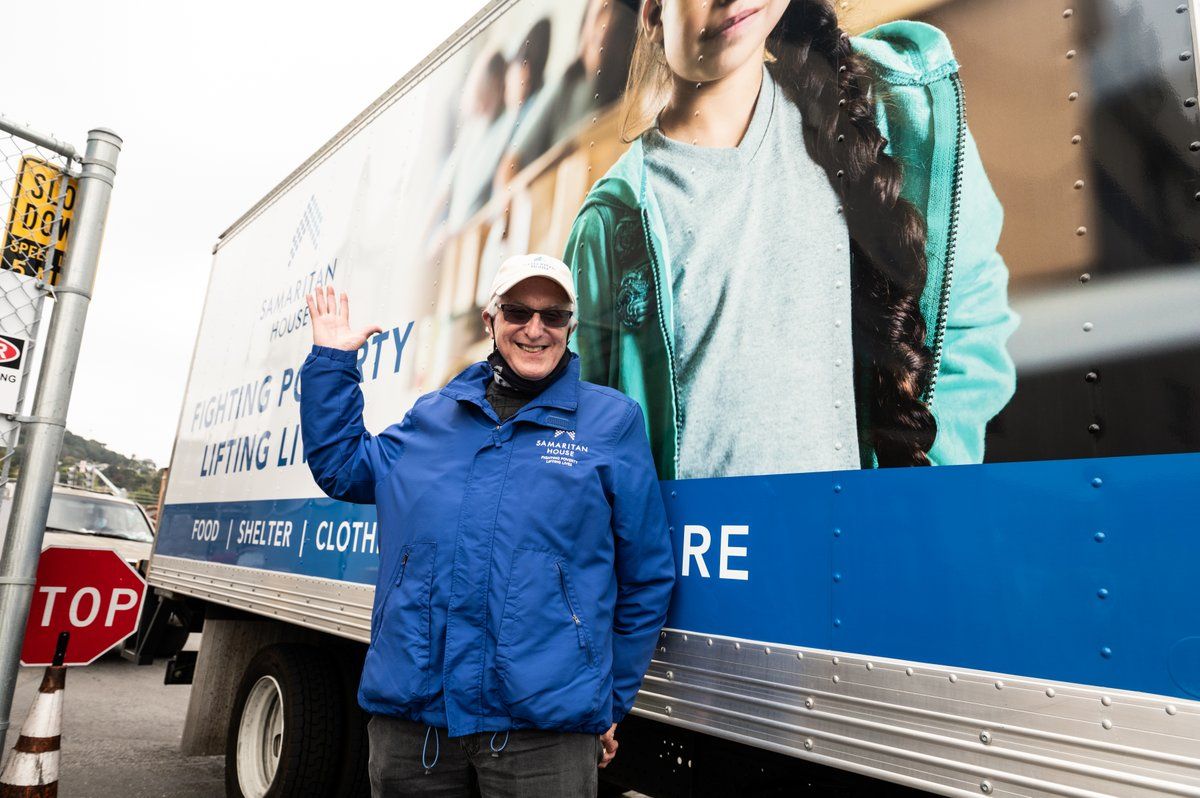
Begin recovering surplus edible food with your food recovery organizations partners. Be sure all staff are aware of food recovery processes and procedures. Many food recovery organizations offer trainings on foods they accept and the conditions (packaging, temperature, etc.) they need the surplus food to be in, but each regulated business or organization is ultimately responsible for ensuring internal processes are adequate to recover the maximum amount of their surplus edible food operation-wide.
You must ensure that all surplus food is recovered safely. Please refer to the Safe Surplus Food Donation Toolkit for guidance or call the San Mateo County Environmental Health Department at (650) 372-6200 with specific food safety handling questions.
Regulated businesses and organizations must keep the following records regarding their food recovery operations:
- A copy of the contract or written agreement with each food recovery organization you partner with. Contracts should including:
- The name, address, and contact information for your food recovery organization partner.
- A list of the types of food that is collected by or self-hauled to a food recovery organization.
- A Summary of the established frequency that food will be collected by or self-hauled to your food recovery organization partner.
- A record of the quantity (in pounds per month) and type of food collected by or self-hauled to each food recovery organization you hold a contract with. Your organization can use any temple or database for this that you choose or may work with your food recovery organization partners to track amounts of food recovered from your operation.
A compliant sample tracking template can be found here.
Regulated businesses and organizations are required to report information about their edible food recovery efforts to the County Sustainability Department annually or upon the request. These requests will come via mail or sent directly to the staffer we have on file for your organization via email or phone call. Reports will be brief, asking high level questions about your edible food recovery compliance efforts.
The County of San Mateo Sustainability Department is currently conducting inspections of regulated businesses to assess their compliance with their new SB 1383 Edible Food Recovery requirements. Regulated businesses and organizations are required to coordinate with the County, allowing County staff access to your facility, food recovery records, and waste bins. The Sustainability Department will schedule inspections in advance whenever possible so that the appropriate person from your operation is available to share the necessary information with our team.
During inspections, local inspection officials will ensure that regulated businesses and organizations have: .
- Arranged to recover the maximum amount of edible food that would otherwise be disposed (landfill, compost, animal feed)
- Arranged for food to be recovered before it spoils, and ensured that their program does not intentionally spoil surplus edible food.
- Contracted with a food recovery organization or service for collection or acceptance of edible food for food recovery (the contract needs to be signed by appropriate parties and currently valid).
- Allowed the appointed inspector to access the premises and review records of their food recovery program
- Allow the appointed inspector to view kept records that include the following information:
- A list of each food recovery service or organization that collects or receives your edible food, including name, address and contact information
- A copy of all contracts or written agreements with a food recovery organization or service
- The types of food that are collected by or self-hauled to each food recovery service or organization
- The established frequency that food is collected or self-hauled
- The quantity of food (measured in pounds) recovered per month, collected or self-hauled to a food recovery service or organization for food recovery food recovery be integrated into your business or organization’s operation.
What is considered edible food?
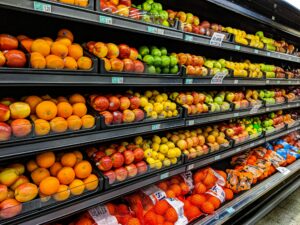
SB 1383 defines “edible food” as any raw, cooked, or processed edible substance, ice, beverage, an ingredient used or intended for use or for sale in whole or in part for human consumption and chewing gum.
This definition is consistent with the State of California Retail Food Code.
Can my business offset the costs of edible food recovery services?
Your business may offset the cost of edible food recovery services and may even experience net savings. The following are options available to your business
- Reduce your service levels with your hauler:
Businesses recovering the maximum amount of their surplus edible food may find that they no longer need the same level/frequency of waste collection services from their haulers. Once you have your edible food recovery program in place, contact your hauler to determine if you are able to reduce your service levels and save on your trash bill. - Enhanced tax deductions:
There may be tax advantages for the recovery of edible food by a non-profit food recovery organization or service. Organizations such as the Harvard University Food Law and Policy Clinic have developed a guide to help businesses understand this enhanced deduction. You can find it here.
Every business and edible food recovery arrangement will be different. Consult with a tax professional to determine how enhanced tax deduction applies to your situation.
Will I be held liable for the food recovered from my business?
There are both Federal and State legal protections against civil and criminal liability for food generating businesses and organizations that have their surplus edible food recovered by a non-profit organization. These protects exist if surplus food is provided in good faith, using standard food handling procedures, even if the recovered food later causes harm to an end recipient.
More information on liability protections can be found here.
Food generating businesses that have their surplus edible food recovered by a non-profit organization are protected from crimilnal and civil liability
Food recovered from a permitted food facility are considered donations when given to a non-profit organization in good faith, using standard food handling procedures, and when the non-profit then distributes this recovered food to needy individuals free of charge. Food recovery done in this manner is legally protected from criminal and civil liability even if a recovered food product later causes harm to the end recipient.
Lawsuits arising out of the donation or provision of recovered food are extremely uncommon, and there have not been any known cases of litigation that involved food donation following the rules above.
The primary legal protections for food donation include:
- United States Code, Bill Emerson Good Samaritan Food
- Donation Act (Title 42, Chapter 13A, Section 1791 (c))
- California Good Samaritan Food Donation Act (AB 1219)
- California Health and Safety Code (Section 114433)
- California Civil Code (Section 1714.25 (a))
- California Food and Agriculture Code (Section 58505)
More information on these liability protections can be found here.
How does edible food recovery help fight climate change?

When food is landfilled, it decomposes and emits methane gas, a super pollutant that traps heat in our atmosphere and intensifies climate change at a rate of 30 times that of carbon dioxide over a 100 year period.
San Mateo County is already facing the impacts of climate change in the form of extreme weather conditions, wildfires, and sea level rise. In 2019 the County’s Board of Supervisors declared a climate emergency and has developed climate action plans to help our communities address climate change.
Edible food recovery enables businesses and organizations like yours to take immediate action on climate change by keeping the maximum amount of your surplus food out of the landfill as possible. This prevents methane emissions and the global warming they cause. When comes to climate change, every ounce counts!
Will edible food recovery extend the life of our landfill?
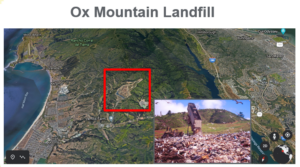
Yes! The Ox Mountain Landfill is currently the only landfill in San Mateo County and, like all landfills, its space is limited. When it fills the County will either need to develop a new landfill or residents and businesses will need to pay to have their waste hauled to a neighboring County’s landfill at a greater cost.
It is in everyone’s best interest to extend the life of our landfill as long as possible. Edible food recovery will support this by diverting surplus edible food from our waste stream. Businesses that have their surplus recovered not only preserve our landfill for themselves, but the entire County.
Where can I find my local edible food recovery ordinance?
CA SB 1383 requires each jurisdiction to adopt its own enforceable edible food recovery ordinance. In San Mateo County, every jurisdiction has passed the same Edible Food Recovery Ordinance as part of the Sustainability Department’s Edible Food Recovery Program. Your jurisdiction’s ordinance can be found through the links below:
| Edible Food Recovery Ordinances by Jurisdiction | ||
|---|---|---|
| City of Atherton | City of Menlo Park | Town of Colma |
| City of Belmont | City of Millbrae | Town of Hillsborough |
| City of Brisbane | City of Pacifica | Town of Portola Valley |
| City of Burlingame | City of Redwood City | Town of Woodside |
| City of Daly City | City of San Bruno | El Granada Community Services District |
| City of East Palo Alto | City of San Carlos | Montara Water and Sanitary District |
| City of Foster City | City of San Mateo | West Bay Sanitary District |
| City of Half Moon Bay | City of South San Francisco | County of San Mateo |
*Current as of 1/1/2022. This section will continue to be updated as necessary.

